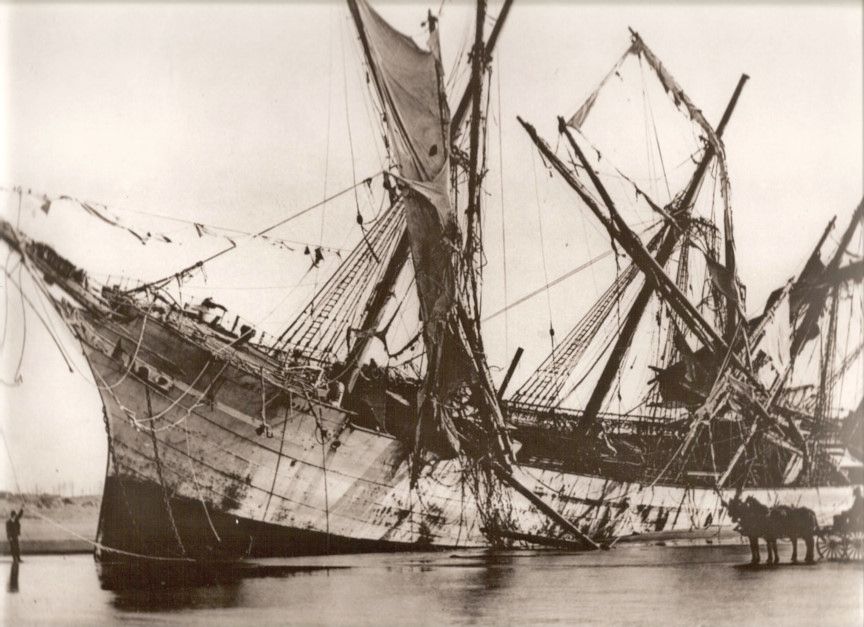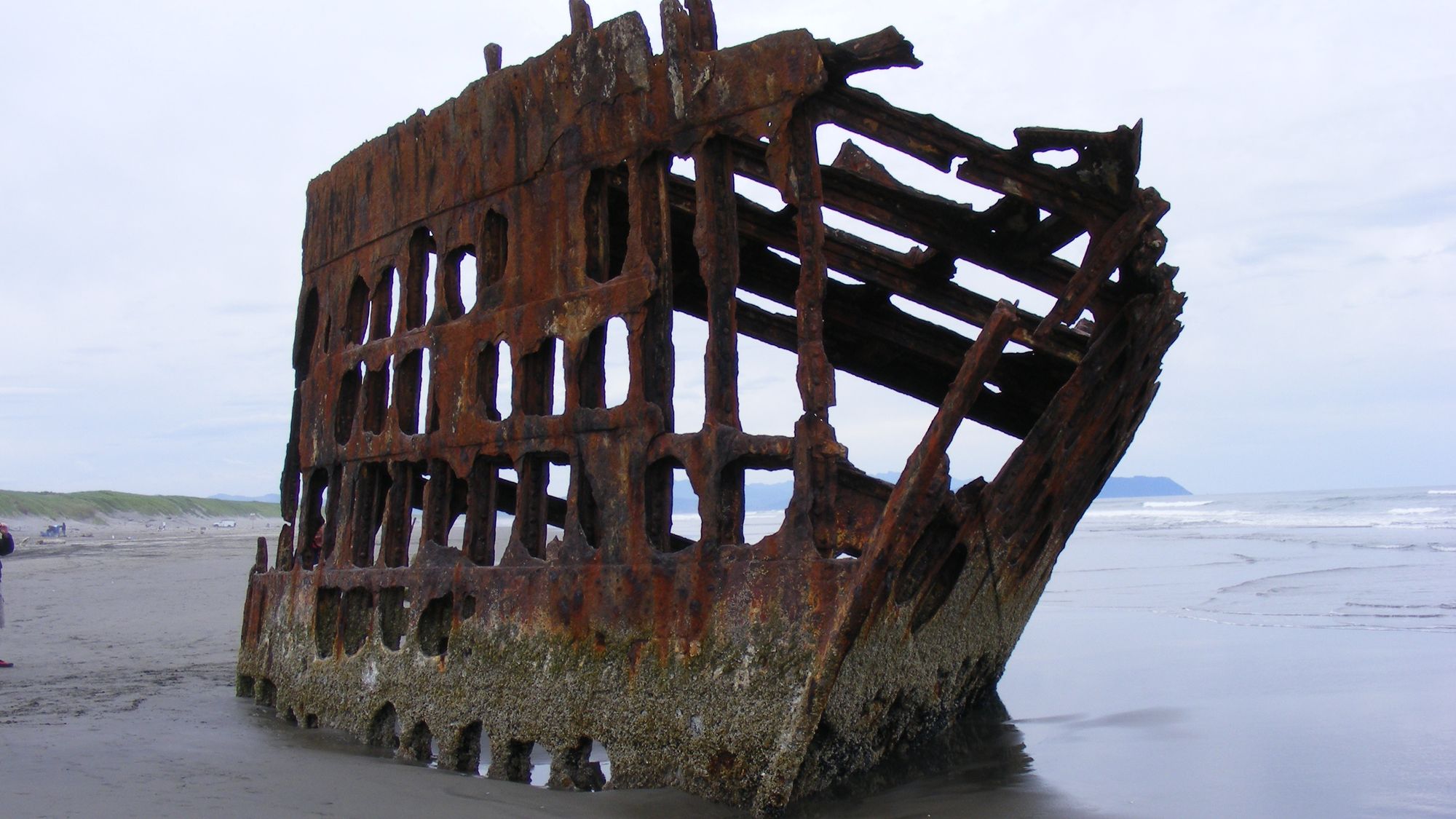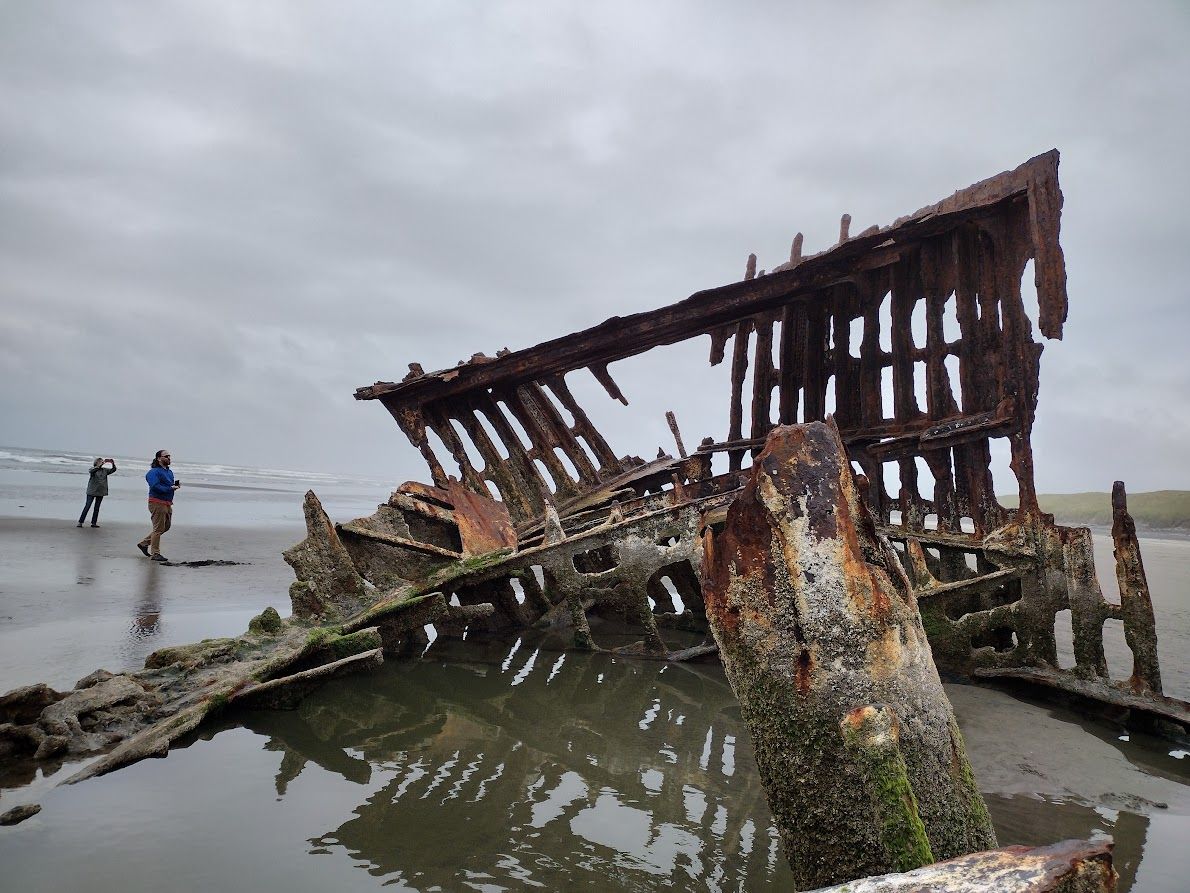An unusual view of the Peter Iredale, Oregon's beloved shipwreck.
The wreck, stuck in the sand since 1906, is more exposed now than almost ever before. Here are some photos.

On October 25, 1906, the four-masted sailing barque Peter Iredale was sailing in a northerly direction along the Oregon coast, headed for Portland, when she was caught in a violent storm near the Tillamook Rock Lighthouse. The wind stripped away the Iredale's upper spars and the captain tried to turn her away from the shore, but she was beached on what was then called the Clatsop Sands, some distance south of the port of Astoria. All the crew, plus two stowaways, were safely evacuated to the nearby Fort Stevens, but the Iredale herself was firmly stuck on the sand. She never left. The original plan was to tow her back out to sea when the weather became more favorable, but anyone waiting for good weather on the Oregon coast in late October or November is going to be waiting a long time. Eventually the ship was abandoned. One hundred and seventeen years later, what's left of her is still there in the same spot, gradually decaying in the wind, surf and endless abrasion of the sand.
Everyone who knows the Oregon coast knows about the Peter Iredale, and millions have seen her remains over the past 117 years. My family has been vacationing at various places near the site for over a quarter century, so I've been seeing it regularly since the 1990s. Most of the time when one approaches the Iredale you'll see only the large iron bow section sticking up out of the surf and the sand, and occasionally two steel poles--which were once part of the ship's rudder--some distance away. Recently, however, as coastal tide and current patterns have changed, likely as a result of climate change, far more of the wreck has become visible than has ever been seen since I've been going there. This past weekend I visited again and was amazed at how much more there is of the remains of the ship that I'd never seen before. I took these photos (unless the caption otherwise identifies) and I decided to share them with you.

The photo above was taken in June 2011 and is what you usually see of the Peter Iredale. The ship was constructed in 1890 in England, during that curious transitional period when sailing vessels were phasing out and coal-powered steamers were becoming the norm. Thus, instead of being a wooden ship, Peter Iredale had considerable iron components. This bow section is the most well-preserved. The bowsprit collapsed sometime in the 1960s.

Above is what we were able to see of the wreck in June 2023. The main bow section is still there, but sand erosion has uncovered large areas of the wreck that have been invisible until now. The horizontal decking is, I believe, what remains of the ship's lowest deck atop the hold. In the foreground is the basis of the number one mast. All the masts were eventually sheared off. Sometimes, when the sand is low, you can see the very tops of the masts, but we have never seen them all the way down to the bottom.


